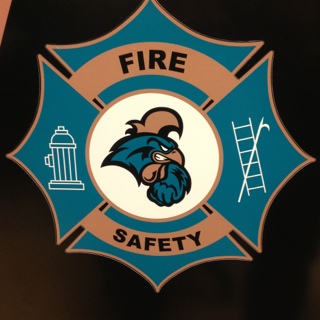Information
-
Weekly Fire Pump Test
-
Document No.
-
Coastal Carolina University
-
Conducted on
-
Prepared by
-
Location
-
Personnel
Weekly Fire Inspections
-
Information on this form covers the minimum requirements of NFPA 25 for centrifugal fire pumps. Separate forms are available to inspect, test and maintain the rest of the fire protection system of which the fire pump is a part. More frequent inspection, testing and maintenance may be necessary depending on the conditions of the occupancy and water supply.
-
Coastal Carolina University
-
Date of Inspection:
-
This inspection is for?
- Woods Pump
- Wall Building
- Brooks Stadium
-
All responses refer to the current inspection performed on this date.
Part I - Owner's Section
-
A. Is the pump in service?
-
B. Has the fire pump remained in service since the last inspection?
-
Signature and Date:
Part II - Inspector's Section
-
Inspectors Name
- Ted Sacra
- Dan Thomas
- Anthony Carter
A. Diesel Fire Pump Weekly Inspections
-
1. Pump house/room proper temperature (at least 70 degrees F for diesels without engine heaters or 40 degrees for others)?
-
2. Ventilating louvers free to operate?
-
3. Suction, discharge and bypass valves open?
-
4. Jockey Pump in Auto Position?
-
5. Piping free from leaks?
-
6. Suction and system pressure gauges normal?
-
7. Controller indicating power on, transfer switch indicating normal situation and isolation switch closed?
-
8. Fuel tank at least two thirds full?
-
9. Controller selector switch in Auto position?
-
10. Battery voltage and charger readings normal?
-
11. Battery indicators on?
-
12. All alarm indicators off?
-
13. Record engine running time meter reading.
-
14. Battery terminals free from corrosion?
-
15. Water-jacket heater operating?
-
16. Pump Start?
-
17. Circulation relief valve flowing water while pump churns?
-
18. Pressure relief valves operating with proper pressure downstream while pump is operational?
-
19. Record Suction Pressure
-
20. Record Discharge Pressure
-
21. Did Pump Run for 30 min?
1. Electric Fire Pump Weekly Inspections
-
1. Electric Motor Driven Pumps
-
Pump in auto position
-
Jockey pump in auto position
-
1. Pump started automatically?
-
Record suction & discharge pressure while running. (PSI)
-
3. Pump packing gland showing slight discharge?
-
4. Free from unusual noises or vibrations?
-
5. Packing boxes, bearings and pump casing free from overheating?
-
Record suction & discharge pressure while running.
-
3. Pump packing gland showing slight discharge?
-
2. Pump run for at least 10 minutes?
C. Maintenance
-
1. Weekly Maintenace Items for Diesel Engine Systems:
-
A. Fuel tank level, tank float switch, and solenoid valve operation acceptable?
-
B. Diesel fuel system free of water?
-
C. Flexible hoses and connectors in fuel and coolant systems acceptable?
-
D. Oil level and lube oil heater acceptable?
-
E. Coolant level acceptable?
-
F. Water pump for coolant system operating?
-
G. Jacket water heater for coolant system acceptable?
-
H. Exhaust system free of leakage?
-
K. Connections to electrical system acceptalbe?
-
L. Isolation switch and circuit breaker exercised?
-
M. Battery case clean, dry and free of corrosion and battery's specific gravity or state of charge passed test?
-
N. Charger and charge rate passed visual inspection and battery charge being equalized?
-
O. Circuit breakers appear clean?
Part III
-
Notes:
-
Pictures of any Issues.
Part IV - Inspector's Information
-
Inspectors Name:
- Ted Sacra
- Dan Thomas
- Anthony Carter
-
Company: Coastal Carolina University Fire Safety
-
I state that the information on this form is correct at the time and place of inspection, and that all equipment tested at this time was left in operational condition upon completion of this inspection except as noted in Part III above.
-
Inspector:
-
Select date
Backflow Preventer
-
Tested for NFPA 25 Requirements ONLY. Certification DOSE NOT fall within the scope of this inspection.
Fire Alarm
-
Inspection & Certification is to be performed by an Alarm Contractor.
NFPA 25 2008:4.1.5 "Changes in Occupancy, Use, Process, or Materials"
-
The property owner or occupant shall not make changes in the occupancey, the use or the material used or stored in the building without evaluation of the fire protection systems for their capability to protect the new occupancies, use or materials.
NFPA 25 2008:4.1.6 "Addressing Changes in Hazard"
-
Where changes in the occupancy, hazard, water supply, storage commodity, storage arrangement, building modification or other condition that affects the installation criteria of the system are identified, the property owner or occupant shall promptly take steps, such as contacting a qualified contractor, consultant or engineer, and authority having jurisdiction, to evaluate the adequacy of the installed system in order protect the building or hazard in question.












